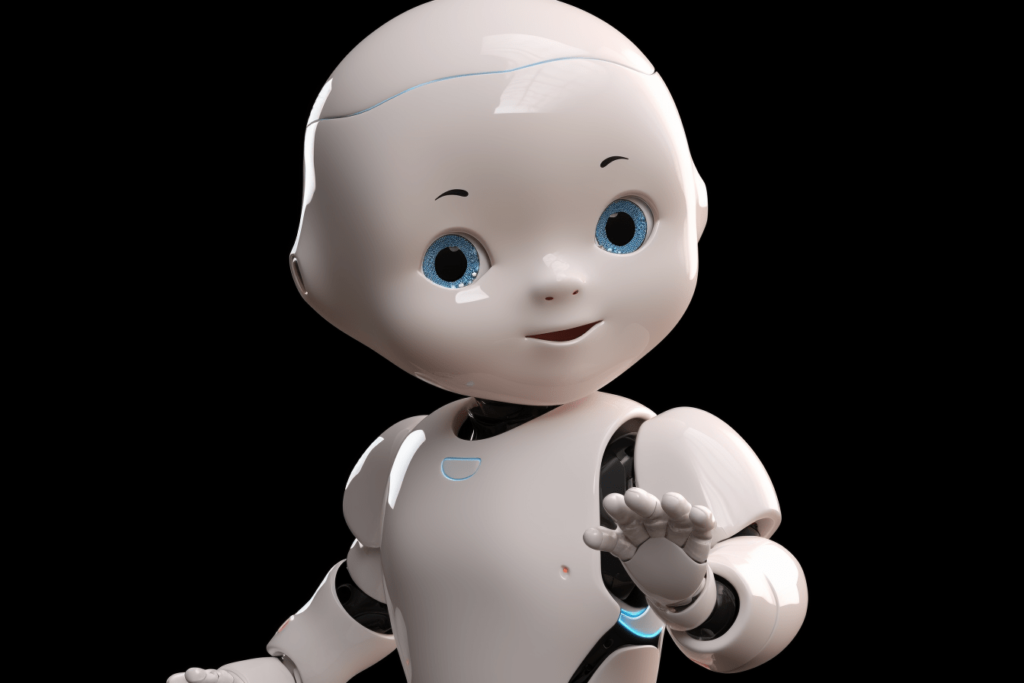TLDW (Too Long; Didn’t Watch):
Sundar Pichai, CEO of Alphabet, sat down with the All-In Podcast to discuss AI’s seismic impact on Google Search, the company’s infrastructure and model advantages, the future of human-computer interaction, intense competition (including from China), energy constraints, long-term bets like quantum computing and robotics, and the evolving culture at Google. He remains bullish on Google’s ability to navigate disruption and lead in the AI era, emphasizing a “follow the user” philosophy and relentless innovation.
Executive Summary: Navigating the AI Revolution with Sundar Pichai
In a comprehensive and candid interview on the All-In Podcast (dated May 16, 2025), Alphabet CEO Sundar Pichai offered deep insights into Google’s strategy amidst the transformative wave of Artificial Intelligence. Pichai addressed the “innovator’s dilemma” head-on, asserting Google’s proactive stance in evolving its core Search product with AI, rather than fearing self-disruption. He detailed Google’s significant infrastructure advantages, including custom TPUs, and differentiation in foundational models. The conversation spanned the future of human-computer interaction, the burgeoning competitive landscape, critical energy constraints for AI’s growth, and Google’s “patient” investments in quantum computing and robotics. Pichai also touched upon fostering a high-performance, mission-driven culture and clarified Alphabet’s structure as a technology-first company, not just a holding entity. The overarching theme was one of optimistic resilience, with Pichai confident in Google’s capacity to innovate and lead through this pivotal technological shift.
Key Takeaways from Sundar Pichai’s All-In Interview:
- AI is an Opportunity, Not Just a Threat to Search: Google sees AI as the biggest driver for Search progress, expanding query types and user engagement, not a zero-sum game. “AI Mode” is coming to Search.
- Disrupting Itself Proactively: Pichai rejects the “innovator’s dilemma” if a company leans into user needs and innovation, citing mobile and YouTube Shorts as examples. Cost per AI query is falling; latency is a bigger challenge.
- Infrastructure is a Core Differentiator: Google’s decades of investment in custom hardware (TPUs – now 7th gen “Ironwood”), data centers, and full-stack approach provide a significant cost and performance advantage for training and serving AI models. 50% of 2025 compute capex ($70-75B total) goes to Google Cloud.
- Foundational Model Strength: Google believes its models (like Gemini 2.5 Pro and Flash series) are at the frontier, with ongoing progress in LLMs and beyond (e.g., world models, diffusion models). Data from Google products (with user permission) offers a differentiation opportunity.
- Human-Computer Interaction is Evolving Towards Seamlessness: Pichai sees AR glasses (not immersive displays) as a potential next leap, making computing ambient and intuitive, though system integration challenges remain.
- Energy is a Critical Constraint for AI Growth: Pichai acknowledges electricity as a major gating factor for AI progress and GDP, advocating for innovation in solar, nuclear, geothermal, grid upgrades, and workforce development.
- Long-Term Bets on Quantum and Robotics:
- Quantum Computing: Pichai believes quantum is where AI was in 2015, predicting a “useful, practical computation” superior to classical within 5 years. Google is at the frontier.
- Robotics: The combination of AI with robotics is creating a “sweet spot.” Google is developing foundational models (vision, language, action) and exploring product strategies, expecting a “magical moment” in 2-3 years.
- Culture of Innovation and Accountability: Google aims to empower employees within a mission-focused framework, learning from the WFH era and fostering intensity, especially in teams like Google DeepMind. The goal is to attract and retain top talent.
- Competitive Landscape is Fierce but Expansive: Pichai respects competitors like OpenAI, Meta, XAI, and Microsoft, and acknowledges China’s (e.g., DeepSeek) rapid AI progress. He believes AI is a vast opportunity, not a winner-take-all market.
- Alphabet’s Structure: More Than a Holding Company: Alphabet leverages foundational technology and R&D across its businesses (Search, YouTube, Cloud, Waymo, Isomorphic, X). It’s about differentiated value propositions, not just capital allocation.
- Founder Engagement: Larry Page and Sergey Brin are deeply engaged, with Sergey actively coding and contributing to Gemini, providing “unparalleled energy.”
- Regrets & Pride: Pichai is proud of Google’s ability to push foundational R&D into impactful products. A “small regret” includes not acquiring Netflix when intensely debated internally.
In what can only be described as a pivotal moment for the technology landscape, Sundar Pichai, the CEO of Alphabet and Google, joined David Friedberg and discussed the pressing questions surrounding Google’s dominance, its response to the AI revolution, and its vision for the future. This wasn’t just a cursory Q&A; it was a strategic deep-dive into the mind of one of tech’s most influential leaders.
(2:58) The Elephant in the Room: Will AI Kill Search? Google’s Strategy for Self-Disruption
The conversation immediately tackled the “innovator’s dilemma,” a theory that haunts established giants when new paradigms emerge. Friedberg directly questioned if AI, with its chat interfaces and complete answers, poses an existential threat to Google’s $200 billion search advertising cash cow.
Pichai’s response was a masterclass in strategic framing. He emphasized that Google has been “AI-first” for nearly a decade, viewing AI not as a threat, but as the primary driver for advancing Search. “We really felt that AI is what will drive the biggest progress in search,” Pichai stated. He pointed to the success of AI Overviews, now used by 1.5 billion users, which are expanding the types of queries people make. Empirically, Google sees query growth and increased engagement where AI Overviews are triggered.
Critically, Pichai revealed a “whole new dedicated AI experience called AI mode coming to search,” promising a full-on conversational AI experience powered by cutting-edge models. This mode sees users inputting queries “literally long paragraphs,” two to three times longer than traditional search queries. He dismissed the “dilemma” framing: “The dilemma only exists if you treat it as a dilemma… you have to innovate to stay ahead.” He drew parallels to Google’s successful navigation of the mobile transition and YouTube’s thriving alongside TikTok by launching Shorts, even when monetization wasn’t immediately clear. The guiding principle remains: “Follow the user, all else will follow.”
Addressing the unit economics, Pichai downplayed concerns about the cost of serving AI queries, stating, “Google with its infrastructure, I’d wager on that… the cost to serve that query has fallen dramatically in an 18-month time frame.” Latency, he admitted, is a more significant constraint than cost. For ad revenue, AI Overviews are already at baseline parity with traditional search, with potential for improvement as AI can better match commercial intent with relevant information.
(15:32) The Unseen Fortress: Infrastructure Advantage and Foundational Model Differentiation
A cornerstone of Google’s confidence lies in its unparalleled infrastructure. Pichai highlighted Google’s position on the “Pareto frontier of performance and cost,” delivering top models cost-effectively. This is largely due to their custom-built Tensor Processing Units (TPUs). “We are in our seventh generation of TPUs,” Pichai noted, with the latest “Ironwood” generation offering over 40 exaflops per part. This full-stack approach, from subsea cables to custom chips, is crucial for serving AI at scale and managing costs.
Regarding the hefty $70-75 billion capex projected for 2025, Pichai clarified that roughly half of the compute spend is allocated to Google Cloud, supporting its enterprise offerings and enabling innovation from Google DeepMind across various AI domains – not just LLMs, but also image, video, and “world models.”
When asked about Nvidia, Pichai expressed “extraordinary respect” for Jensen Huang and Nvidia’s “world-class” software stack. While Google trains its Gemini models on TPUs internally, they also use Nvidia GPUs and offer them to cloud customers. “I like that flexibility,” he said, “but we are also long-term committed to the TPU direction.”
On the topic of foundational model performance, Pichai acknowledged that progress isn’t always linear (“artificial jag jag intelligence,” as Andrej Karpathy termed it). However, he sees continuous progress and believes Google is “pushing the research frontier in a much broader way than most other people beyond just LLMs.” He doesn’t see fundamental roadblocks to further advancements yet, though progress gets harder, which he believes will distinguish elite teams. He also touched upon the “differentiated innovation opportunity” of leveraging data from Google’s suite of products (like Gmail, Calendar, YouTube) with user permission to create superior, personalized experiences.
(25:08) The Future of Human-Computer Interaction, Hardware, and the AI Competitive Landscape
Looking ahead, Pichai envisions human-computer interaction becoming more seamless, where “computing kind of works for you.” He sees AR glasses – not immersive VR displays, but glasses that augment reality ambiently – as a potential “next leap,” comparable to smartphones in 2006-2007. “When AR really works, I think that’ll wow people,” he mused, while acknowledging existing system integration challenges.
The competitive landscape is undeniably intense. Pichai spoke respectfully of OpenAI (Sam Altman), XAI (Elon Musk), Meta (Mark Zuckerberg), and Microsoft (Satya Nadella), calling them an “impressive group” driving rapid progress. “I think all of us are going to do well in this scenario,” he suggested, emphasizing that AI represents a “much bigger landscape opportunity than all the previous technologies we have known combined.” He even noted that “companies we don’t even know… might be extraordinarily big winners.”
The discussion also covered China’s AI prowess, particularly highlighted by DeepSeek’s efficient models. Pichai admitted that DeepSeek made many “adjust our priors a little bit” about how close Chinese R&D is to the frontier, though he noted Google’s Flash models benchmarked favorably. “China will be very, very competitive on the AI frontier,” he affirmed.
A significant portion of this section involved the engagement of Google’s founders, Larry Page and Sergey Brin. Pichai described them as “deeply involved in their own unique ways,” with Sergey Brin actively “sitting and coding” with the Gemini team, looking at loss curves and model architectures. “To have a founder sitting there… it’s a rare, rare place to be,” Pichai shared, valuing their “nonlinear thinking.”
(35:29) The Energy Bottleneck: AI’s Thirst for Power
A critical, and often underestimated, constraint for AI’s future is energy. Pichai agreed with Elon Musk’s concerns, identifying electricity as “the most likely constraint for AI progress and hence by definition GDP growth.” He stressed this is an “execution challenge,” not an insurmountable physics barrier. Solutions involve embracing innovations in solar (plus batteries), nuclear (SMRs, fusion), geothermal, alongside crucial grid upgrades, streamlined permitting, and addressing workforce shortages (e.g., electricians). While Google faces current supply constraints and project delays due to these factors, Pichai expressed faith in the US’s ability to innovate and meet the moment, driven by capitalist solutions.
(41:20) Google’s Moonshots: Quantum Computing and Robotics
Pichai reiterated Google’s commitment to long-term, patient R&D, citing Waymo as an example of perseverance.
Quantum Computing: The Next Frontier
He likened the current state of quantum computing to where AI was around 2015. “I would say in a 5-year time frame, you would have that moment where some a really useful practical computation… is done in a quantum way far superior to classical computers.” Despite the “noise” in the industry, Pichai is “absolutely confident” in Google’s leading position and expects more exciting announcements this year that will “expand people’s minds.”
Robotics: AI Embodied
The synergy between AI and robotics is creating a “next sweet spot.” Google, with its “world-class” vision-language-action models (Gemini robotics efforts), is actively planning its next moves. While past ventures into the application layer of robotics might have been premature, the current AI advancements make the field ripe for breakthroughs. “We are probably two to three years away from that magical moment in robotics too,” Pichai predicted, suggesting Google could develop something akin to an “Android for robotics” or offer its models like Gemini to power third-party hardware. He mentioned Intrinsic, an Alphabet company, as already working in this direction.
(47:56) Culture, Coddling, and Talent in the Age of AI
Addressing narratives about Google’s “coddling” culture, Pichai explained the original intent behind perks like free food: to foster collaboration and cross-pollination of ideas. While acknowledging the need to constantly refine culture, he emphasized that empowering employees remains a source of strength. He highlighted the intensity and mission-focus within teams like Google DeepMind, where top engineers often work in person five days a week.
“We are not all here in the company to resolve all our personal differences,” he stated. “We are here because you’re excited about… innovating in the service of the mission of the company.” The COVID era was a “big distortion,” and bringing people back, even in a hybrid model, has been crucial. He believes Google continues to attract top-tier talent, including the best PhD researchers, and that the current “exciting and intense” AI moment fosters a sense of optimism reminiscent of early Google.
(56:50) Alphabet’s Identity: Beyond a Holding Company
Pichai clarified that Alphabet isn’t a traditional holding company merely allocating capital. Instead, it’s built on a “foundational technology basis,” leveraging core R&D (like AI, quantum, self-driving tech) to innovate across diverse businesses. “Waymo is going to keep getting better because of the same work we do in Gemini,” he illustrated. The common strand is deep computer science and physics-based R&D, with X (formerly Google X) continuing to play a role as an incubator for moonshots like sustainable agriculture (Tapestries) and grid modernization.
Reflections: Regrets and Pride
When asked about his biggest regrets and proudest achievements, Pichai expressed immense pride in Google’s unique ability to “push the technology frontier” with foundational R&D and translate it into valuable products and businesses. As for regrets, he mentioned, “There are acquisitions we debated hard, came close.” When pressed for a name, he hesitantly offered, “Maybe Netflix. We debated Netflix at some point super intensely inside.” He framed these not as deep regrets but as acknowledgments of alternate paths in a world of “butterfly effects.”
Sundar Pichai’s appearance on the All-In Podcast painted a picture of a leader and a company that are not just reacting to the AI revolution but are actively shaping it. With a clear-eyed view of the challenges and an unwavering belief in Google’s innovative capacity, Pichai’s insights suggest that Alphabet is determined to remain at the forefront of technological advancement for years to come.



